
Foto : ©Floréac © www.mooiwatplantendoen.nl | Unsplash | Pixabay | Pexel Kaboompics Early spring 2023 Issue no 23 Floréac Magazine
Supplier in the spotlight : Leybaert
Five plant trends according to Mr Plant Geek
Kratiste: Made from plants, for plants
Department in the spotlight: Goods reception
MPS GAP as lisence to sell
Product in the spotlight : Richplant range
2
05 08 14 18 22 28 34 Foreword
Content

3
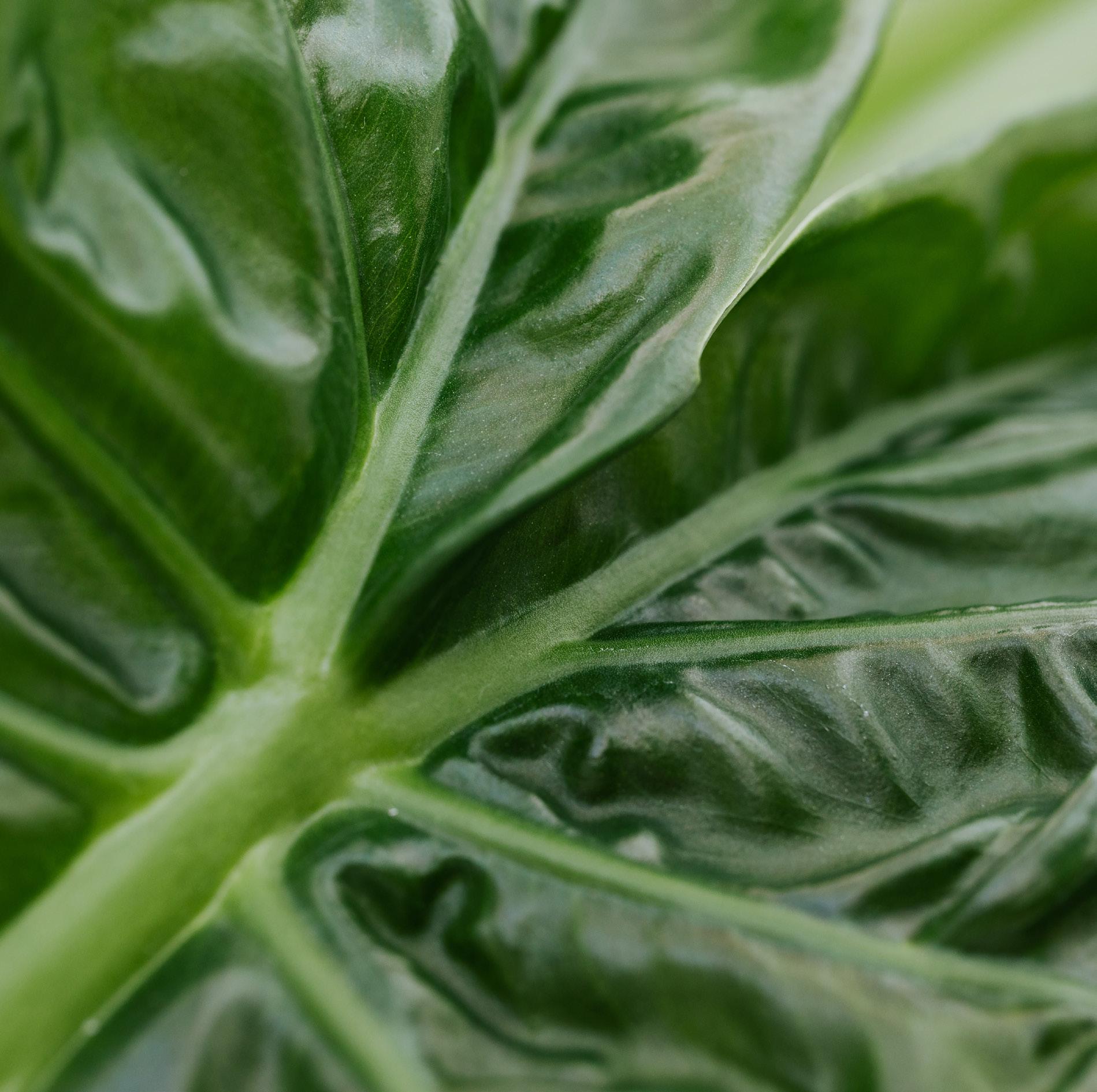
4
Ode to positive energy
We cannot look back at 2022 without dwelling on energy. On the one hand, the war in Ukraine has caused an energy crisis that we are feeling everywhere, especially in our sector. On the other hand, sustainability, and thus how we all deal with fossil energy, has come even more to the fore. Both issues touch on the ethical question of how we want to treat each other and the world.
But energy is also a beautiful thing. In science, energy is defined as ‘the ability to effect a change’. Floréac is in full swing, as our ambition remains to be the partner of choice for major plant retailers. The result is an impressive list of projects and initiatives to take care of our customers even better and more efficiently. While our energy, our ability to implement change, is great, it is not infinite. So in 2023, we are making a targeted choice to focus on a number of areas that connect the short and long term.
We are pushing hard on systems, processes, innovation and digitalisation in 2023. But people will always be the key, and people need positive energy. Energy that you can multiply amazingly easily: a kind word, a compliment, a helping hand, a listening ear, a little time for each other, a small gesture of support. Everyone can contribute to this every day, and in this way, too, we make the world a little nicer for each other together.
In this updated magazine, be inspired by spring-fresh trends, influencer Mr Plant Geek, the importance we attach to sustainability, a look at some of our suppliers, and the new section ‘Department in the Spotlight’.
I wish you much reading pleasure and, of course, a particularly warm and loving 2023, full of enthusiasm, vigour and positive energy.
Benoit Strauven CEO

5
Ears and feet
The eye-catcher this spring is a flower pot with ears. Sober with a corner off. Pots on legs also catch the eye. With their ethnic touch, they are already making you dream of distant travels. Ornamental pots with ears and feet add a playful touch to any interior. Mix and match with different styles to inspire customers looking for that little bit more.



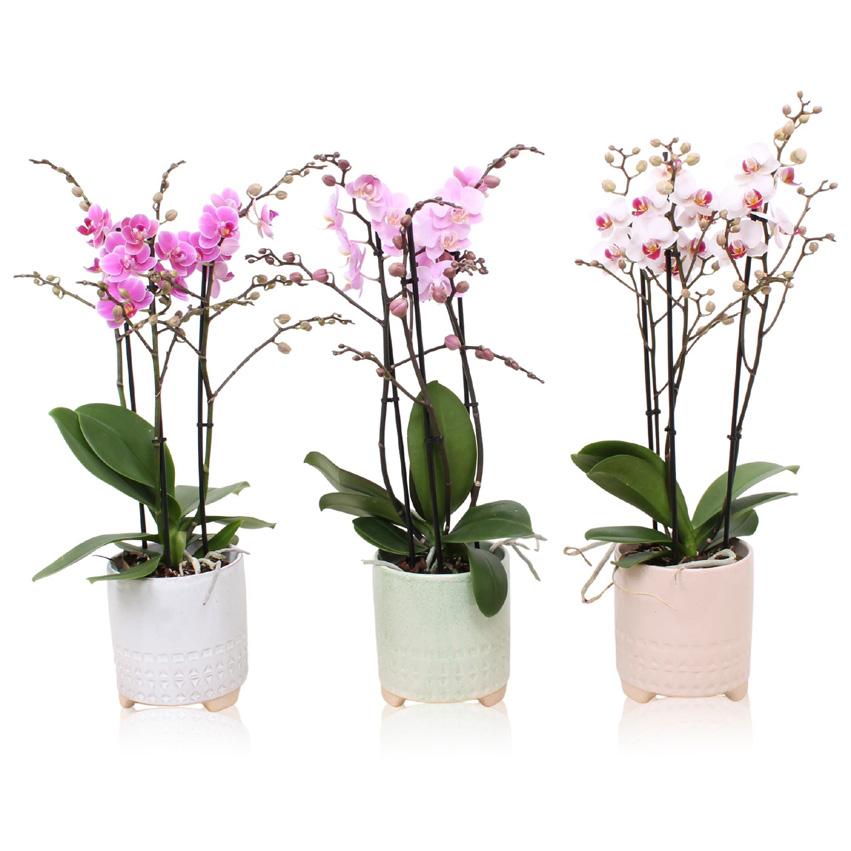
SUCCMX-SP634A PHMUMX-SP09TA3A

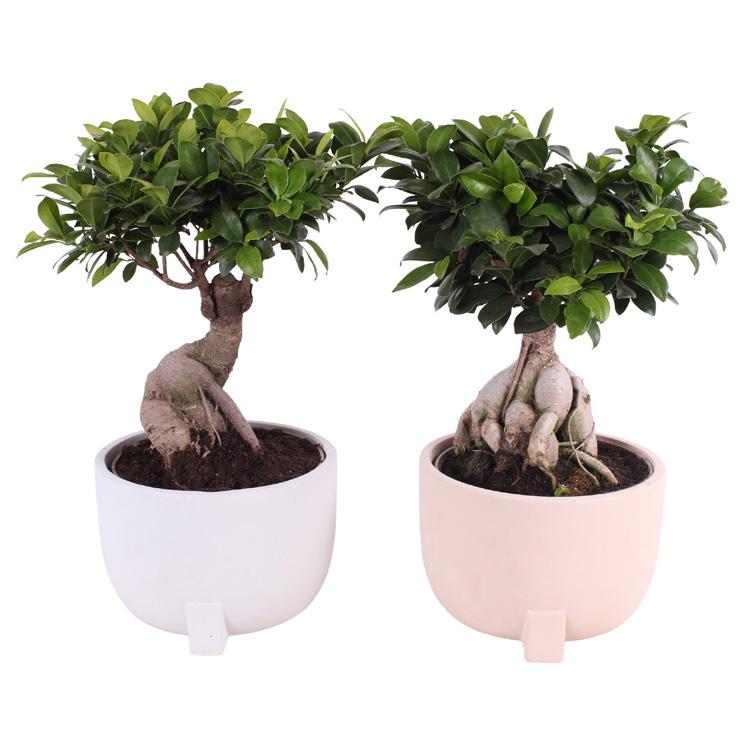







7 SYNGMX-SP03A COUPE-§SP801A COUPE-§SP144A FIGINS-SP07A CACTMX-SP246A COUPE-§SP800A
Commit to plant species produced naturally. That too is innovation
A nursery that constantly questions and reinvents itself? For nursery Leybaert, this is self-evident. Smart and conscious choices chart a sustainable path. And all with respect for tradition and nature. Sales manager Silas Crezée gives an insight behind the scenes.

8
Tom Leybaert & Silas Crezée
Everything starts with the Azalea indica
In 1968, father Etienne Leybaert planted the first azaleas indica in his greenhouses. A quality regional product from Ghent that was popular with many growers at the time. Competition is fierce. When Tom Leybaert, the second generation, comes on board, things start to move. “We had an ideal starting position,” explains sales manager Silas Crezée . “Growing Azaleas no longer held any secrets for us, and we could apply that experience perfectly to growing Rhododendrons. We started to distinguish ourselves on the market with outdoor plants in different sizes and colours. In addition, we stayed true to our first crop. But if you compare the cultivation of Azaleas now with that of say 55 years ago, you do notice that we went through a serious transition.”
Distinguished with range
Talk about transition. Today, the nursery covers 31 hectares and, in addition to Azaleas and
Rhododendrons, there are also Vaccinium corymbosum, Nandina domastica, Helleborus, Agapanthus and Chamaecyparis Ellwoodii in the greenhouses and fields. But the absolute showpieces are Azaleas japonica ‘Pink Spider’® and Azaleas japonica StarStyle®. Why such a diverse range? “We want to completely unburden our customers. If they want to distinguish themselves with a separate range, we can help them with that. You won’t find Azalea japonica ‘Pink Spider’® and Azalea japonica StarStyle® anywhere else. This diverse range also allows us to respond creatively to customer requests. Like most nurseries, we have a standard supply list, but a lot is possible. No request is too crazy for us. If a customer sees a particular opportunity in the market, we think along with them about how we can fulfil it.”

Working in partnership
Thinking along with the customer, offering customisation ... For nursery Leybaert, these are the pillars of a successful cooperation. The word ‘customer’ is out of place here, they feel. “We prefer to talk about partners rather than customers. In partnership, you achieve much more. Just look at our cooperation with Floréac. We sit around the table and look for a solution together to distinguish ourselves in the market. That partnership works both ways, you strengthen each other. Especially today, when a number of growers in Lochristi and the surrounding
9
“ In partnership, you achieve much more. Just look at our cooperation with Floréac. More than ever, we feel the need to pull the same cart together ”
Silas Crezée
area are throwing in the towel. More than ever, we feel the need to pull the same cart together.”
My Goodness!
Nursery Leybaert constantly keeps its finger on the pulse. And the customer’s wishes come first. But their feelers extend beyond that. “We work in and with nature and three years ago felt the need to share that story with consumers. Moreover, we felt our range needed some refreshing. Azaleas often give a traditional feel. We felt this was unjustified. And when we made the switch from plastic to 100% recyclable material for our pots, we seized that moment to market our story. The result: My Goodness!, a brand with a fresh and contemporary look. With this consumer story, we are in direct contact with consumers. We communicate the sustainable efforts we make through our packaging or social media and website.”
Working with and in
nature
These sustainable efforts are not minus. “Even from before it became an issue everywhere, we have been working on this. Mainly out of respect for nature. For us this is self-evident. Three years ago we installed solar panels so that today 70% of our energy consumption is renewable. We also use water very sparingly. We collect, filter and reuse 45% of the excess water we use to water our plants. We also store all the rainwater we collect in watersaving basins. This is then used to water our plants.
We choose recyclable materials. Not only for our pots but also for wrapping paper and other logistics materials. We are also working on peat reduction, a big challenge in acid-loving plants. Our aim is to make great strides here in the short term. Where we are also making progress is in reducing resource use. We also want to focus even more on species produced naturally. In our view, that too is innovation.
On the right side of the crisis
In this turbulent period, how does Nursery Leybaert look to the future? “According to us, it looks bright. Three years ago, we

10
Furthermore, we are MPS-GAP, GRASP and product-proof certified.
“ By making those sustainable choices, we are now on the right side of the crisis ”
Silas Crezée
Where? Moerbeke-Waas (BE)
What? 3.5 million plantings including Azalea indica, Rhododendron, Vaccinium corymbosum and Chamaecyparis Ellwoodii, Nandina domastica, Helleborus, Agapanthus

Employed? 20 permanent employees, supplemented during busy periods by 15 to 30 seasonal workers
Sales market? All of Europe and a few small customers outside Europe
made the decision to focus even more on sustainable cultivation. And I am not just talking about energy techniques, but also about our product types. Since 2019, for instance, we have been growing Agapanthus. Plants that are very low-maintenance. For this, we use extremely rare South African genetics that allow us to stand out on the market. The biggest advantage of these varieties is that they are both heat-resistant and have an extra-long flowering period. Today, consumers want value for money and this plant meets this need. Thanks to these sustainable choices, we are now on the right side of the crisis. Another added bonus. With this crop, we can grow plants all year round and make optimal use of our logistics infrastructure.”


The best is yet to come
Always nice to record a positive story and, according to Silas, the best is yet to come “I particularly enjoy working here. Mainly because the sky is the limit. You feel that mentality here to every fibre. You get the space to grow and write your own story. And that story is far from over.”
11
Nature touch
The back-to-nature trend remains a hit. Soft earthy tones blend organically with green houseplants. No bells and whistles but nature at its purest. Go for terracotta with white wash, you won’t find anything more authentic. Or go for basketwork in natural materials like jute and sea grass. Also back in fashion: vintage rattan. Alternate with sturdy wooden pots and your shop is ready for spring.


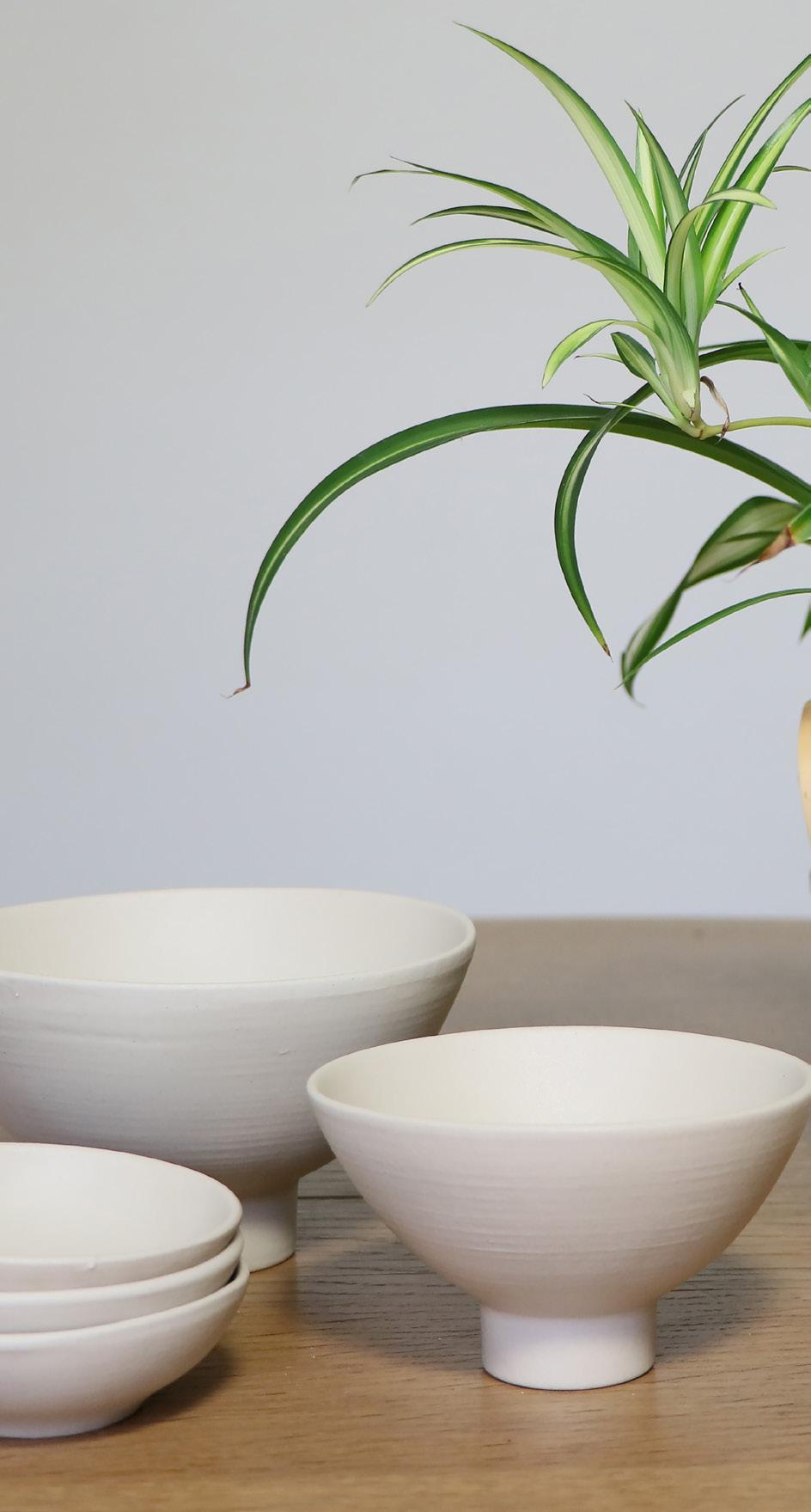

GPESMX-MA02A
ALOE-SP03A
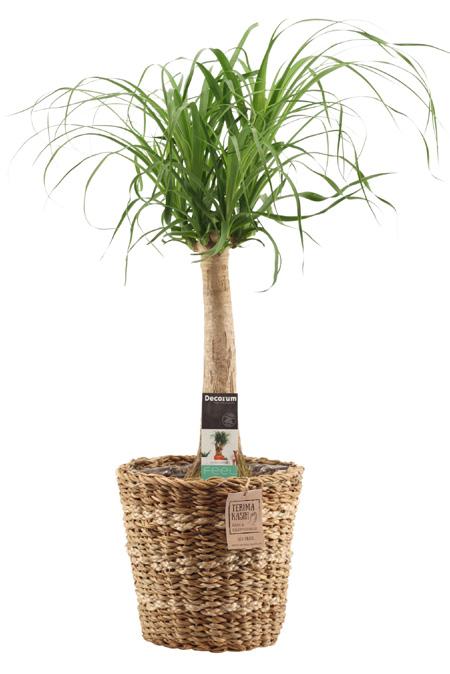







13 GPESMX-MA03A SCHEFF-MA13A BEAUCA-MA02A GPESMX-MA04A GPMVMX-MA09A PHWHWA-SP01A
Five plant trends according to Mr Plant Geek
With almost forty-five thousand followers on Instagram, English blogger Mr. Plant Geek is a household name. By his own admission, he has been growing plants since he was five years old. Today, he preaches his plant love through various online channels and is in the Sunday Times top 20 most influential people in the gardening world. Just to say: if there is one person we should be prying into the plant trends of 2023 from, it is him.

14
Mr Plant Geek -- Michael Pery
As a curious plant hunter, I am always on the lookout for the latest in our industry. For innovative techniques in breeding and genetics, for example. But what excites me most is how we can revalue a known plant. Or even more so: how we can use it in a different way.

I admit: on a grower’s journey, I am often the louse in the fur. I’m the one asking 101 questions, peeking through every greenhouse door and commenting on exclusive plants, varieties that are probably still top secret. But I love learning, getting a feel for what is being developed, and then feeding that back to what consumers are looking for.
I have been around the industry for a long time and by now have a broad knowledge of European/global breeding companies. In addition, I can fall back on my many European PR contacts and - most importantly - a following of loyal plant enthusiasts on social media and the internet. In short, a privileged position to
sector. So I take out my crystal ball and predict five striking trends.
Plants with a purpose
Consumers are becoming smarter and more critical. The impact on the environment is well documented today and will continue to be so. Consumers are looking for ways to make a difference.
So we need to think more about the ‘usefulness’ of a plant. Is it good for pollination? Does it provide a food source, both for us and another part of the food chain? And what about carbon uptake? All things we need to analyse. More so. Why not add ratings to plant labels? Just like an eco-label on, say, a fridge. Worth considering, right?
connect different sectors. And in both directions: the market knows what the consumer wants. Conversely, the consumer sees what the future holds.
So I feel honoured that Floréac has asked me to share my views on current and emerging trends in our
A reflection. If you do this, you question the usefulness of ornamental plants. Although, these plants are more than eye candy. They are indeed needed by wildlife and/or pollinators. Personally, I don’t hope the end of double-flowered plants is near. But as part of a ‘balanced garden,’ they should still be possible. So, let’s keep hoping, even though the market might shrink.
15
“
As a curious plant hunter, I am always on the lookout for the latest in our industry. ”
Michael Perry
Opt for better ground covers
The previous trend, plants with a purpose, dovetails perfectly with the trend of opting for better ground cover. Besides, it could also mean a new direction for breeding programmes, measuring pollen and nectar production.

I always find it curious that new Primulas like ‘Everest’ produce hundreds more flowers, and hence nectar and pollen, than the wild forms. And yet consumers often prefer plants growing in the wild. In this case, which plant is better for bees?
I have already talked about
balance when choosing plants, but I think this also applies to plant composition. Last year, I experimented with some summer patio containers, combining ‘proud bedding plants’ with more subdued perennials and hardy foliage plants. The result was super stylish. The main components of the outdoor pot, Heuchera, Hosta and so on, could then easily be reused in the second season.
So will bedding plants look different in the future? Can a bedding plant also be something that is durable and survives the seasons? Step forward, longflowering plants like Alstroemeria and Penstemons - your time has come!
Flexible planting
As you can see: I am obsessed with categorising plants. Or rather, by eliminating them! I always look for consumers with a sense of adventure. Those who put a ‘houseplant’ in an outdoor container, mixed with petunias. Should be possible.
For this, I draw inspiration from a method I learnt in Japan a few years ago: the Barakura style. A very avant-garde approach that opens up a lot of possibilities. Basically, it comes down to flower arranging on a small scale. Because you fill a pot or container as wildly and lushly as you would a mixed bouquet. Different kinds of potted plants close together, that creates sparks in a planter. And best of all, throughout the seasons you can vary: if a plant is outgrown or too big, just replace it.
The most obvious category to experiment with are houseplants. But actually, these plants were not bred to grow in homes. They only really flourish in fresh air. My tip: go for tropical plants mixed with the classics.
New dimension for houseplants
Not everyone has a garden or a terrace. You can solve that by hanging flower boxes on your window. Even though I am a fan of this, I keep hoping for a universal
16
fit that fits every window. So far, that remains a fable.
Houseplants remain an evergreen, a trend that will never blow over. They are soothing, beautify your interior and boost your body and mind. However, one point of attention: if the assortment narrows and the prices of rare plants skyrocket, consumers will drop out.

All spotlight on flowering houseplants, a category previously considered cheap. Now is the time to shine. Consider the Kalanchoe that blooms for 100 days (indoors or outdoors), the new generation of Phalaenopsis orchids, which are now fragrant too, the exuberantly exotic Bromeliads and the colourful Chrysanthemums. Let them bring colour and joy into your home, much more than an Alocasia ...
Embrace the colour carnival
Time for my latest trend, that of cheerful nonchalance. Consumers just want COLOUR! Bold colours, bright colours, and remember: they don’t give a damn
about the Pantone colour of the year. So it’s up to us to inspire them and make sure they make the right choices, keeping in mind my tips above.
Because while it is good to choose plants that provide an instant feel-good feeling, it is even better to go for a plant with a sustainable purpose. That is the path we need to show our consumers. We need to educate them with the correct information, and most importantly, excite them with the right trends.
Soit, time to browse my greenhouse again.

17
“
Houseplants remain an evergreen, a trend that will never blow over. They are soothing, beautify your interior and boost your body and mind ”
Michael Perry
Kratiste Made from plants, for plants
Over a year ago, Kratiste b.v. introduced the first “plantsupporting” product under the Kratiste brand name: a fully biodegradable climbing pole. A wide range of Kratiste products is now available. Those who were at the Trade Fair in Aalsmeer in November may already have seen some of it. At least if there was room to look, because it was enormously busy in and in front of the stand.

18
At least the sustainable difference you can make by using Kratiste products. The majority of the products consist of waste potato peelings and Miscanthus Giganteus (Elephant Grass). From the potato industry waste residues, PLA (Poly Lactose Acid), or lactic acid, is made. By using this biodegradable waste stream from the food industry, no regular plastic is needed. The Miscanthus that is added optimises compostability. Moreover, Miscanthus stores a lot of CO2: As much as 20,000 kg of CO2 is reduced per hectare.
Unlike the traditional “plant support” products, which are often made of bamboo or plastic with coconut fibres imported from China, this sustainable alternative comes from the Netherlands. Not only does this save many transport kilometres, it also gives security of supply and flexibility, which is a plus for the entire chain.
The Miscanthus is grown by Kratiste in the Netherlands and the further production process also takes place in the Netherlands. By producing close to the grower, tens of thousands of kilometres of transport of all products used are saved. It also increases security of supply and flexibility in creating added value.
Looking at the Kratiste climbing poles, there are additional advantages for the grower when using these poles. This is because the plants attach very easily to the climbing poles, which speeds up the growth process and reduces failure rates.

In terms of fungus resistance, the results so far are very positive. This would strengthen the proposition for all parties in the chain, as risks of damage are reduced.
For the consumer, Kratiste has an additional advantage because the products look beautiful due
to their natural look and feel. Everyone wants to have that in their living room.
As already mentioned, the Kratiste range consists of climbing sticks with biodegradable clips and rope to tie up the plant. As the Kratiste rope is both flexible and strong, it naturally has many more applications. The Kratiste range also includes support poles, racks, label pegs and climbing boards. And no doubt we will see more revolutionary sustainable products appear under the Kratiste brand in 2023.
19
What makes everyone so interested in Kratiste’s products?
Early spring in the garden
Fragrant hyacinths, daffodils in fifty shades of yellow, cheerful primroses and velvety violets... It must be spring. Finally some colour in the garden and on the terrace. Combine these spring bloomers with flower pots in pastels and the colourful picture is complete.




BOLLMX-§SP53A NATETE-§HP003A








21 BOLLMX-SP16A NATETE-§HP004A BOLLMX-§ZNK67A NATETE-§MA008A CAAMLI-HB50A NATETE-§ZNK015A
Department in the spotlight: Goods reception
Receiving all goods is a vital link in the logistics process. If there is a hitch here, it affects the rest of the chain. This process is different in Belgium than in the Netherlands. But the result is the same: only products that meet all the conditions leave here for their destination. Maikel Vlaeminck (team coordinator reception, Belgium) and Rokus Kester (foreman logistics, Netherlands) give a look behind the scenes. .

22
Jolijn Van Boxstal - Wouter Ryon - Maikel Vlaeminck
Can you describe what happens on service reception?
Maikel: “To sum up: here we do the checking and registration of all plants delivered by the suppliers. In Belgium, those deliveries mainly come in at night. When we arrive in the morning, we check the quality of the plants and whether what we ordered has actually been delivered. Is the right article with the right dimensions in the right packaging? For example, if we have ordered white two-branch orchids with a length of 90 cm, they must be on the tray. The quantity must also be correct.
Some growers do this identification themselves. If not, we apply a tray sticker with all the details. With this tray sticker, colleagues can quickly identify the plants to further distribute them per customer order later. This way we check every cart.
Once the check is over and we are sure that all the requested products are present, we register the data in our IT system. In Belgium this is SAP, in the Netherlands Match-online. After this, nothing more can be changed. If we register a cart with orchids and there are azaleas on it, the system stubbornly keeps saying there are orchids on it.”
Rokus: “The biggest difference with the Netherlands is that here, deliveries can be made up to 16 hours. This is because most growers in the area are operational.
In our case, the check takes place in three stages. In the first stage, we receive a digital letter on which we can check whether our order matches what the auction delivers. If there are any discrepancies here, we can rectify them at this stage.
In a second stage, we compare what is on paper with what the grower has supplied. Then we scan the letter and link the lots that are on the letter to the lots on the tray and the distribution sticker is printed. Based on this, we do an additional check.
A lot is delivered to us with a consumer sticker. In that case, we check whether the info matches the distribution sticker. If everything is correct, the products are distributed to the right order. For us, these order lines are fixed in advance. Here, too, we differ from Belgium, where we first buy and only then decide which tray goes to which order.”
Why is this phase so crucial?
Maikel: “First and foremost for our customers. They expect their order to be right. That they receive the right variety with the right properties, in the right quantities. And, of course, to a high quality.”
Rokus: “The moment we attach the distribution sticker to a product, there is no turning back. This step drives the rest of the processing.”
23
“ The reception phase is crucial first and foremost for our customers. They expect their order to be right. That they receive the right variety with the right properties, in the right quantities. And, of course, at a high quality ”
Maikel
Maikel: “I give an example of further processing. If an error happens when checking the height of the plant, it affects the further chain. With us, the computer determines the height of the plant. For example, if an orchid is 90 cm high; then the cart is built up in function of that height. Now suppose that in reality that orchid has a length of 1m20 instead of 90 cm, then we are faced with a problem because the cart is not designed for this.”

Rokus: “Our system is slightly more flexible in this respect. Usually, the builder determines the layout of the cart and so the dimensions are not planned in advance.”
What all do you need to be able to do to work here?
Maikel: “Plant knowledge is a plus but not a prerequisite. Personally, I think it is an added value because if, for example, you cannot distinguish different orchids with the naked eye and you have to fall back on the label every time, you lose valuable time. You also have to be able to work with our IT system. And that requires a number of actions each time, which means there’s a lot on your mind in a short time, especially if you don’t have any experience.”
Rokus: “Plant knowledge is of course necessary for the colleagues who check the quality of plant knowledge. . Because that too is an important criterion when receiving. You have to have an eye for detail. Are the plants of sufficient quality? Do they have the required maturity? If you don’t know what the plant looks like
naturally, you won’t recognise the abnormalities either. Anyway, you do learn that. In the Netherlands, for example, we organise training courses to master this.
In terms of IT, we have a more accessible system in the Netherlands. As a foreman, I also try to standardise as much as possible which limits the number of operations.”
Maikel: “Flexibility is also a great asset. For a 9-to-5 job, this is the wrong place. Not all periods are equally busy and it is difficult to estimate in advance when the peaks are coming. In spring usually, but even then it depends on weather conditions. If the period with frost lasts longer, spring will also be slower to arrive. Christmas is usually also a peak period. But it could also be that a customer suddenly asks for a large order and even then it is all hands on deck. You have to be able to deal with that unpredictability.” Who are you working with?
Rokus: “We work closely with the suplier support department where all orders are forwarded to growers. Feedback thus reaches us directly.”
Maikel: “Our people also sometimes shift to other departments. When it’s quieter in reception, for example, or when they need extra helping hands elsewhere. It’s interesting
24
because that way you get to know the whole company. Moreover, you experience the importance of your own task.”
What makes this job so fascinating?
Maikel: “The variety. Every day is different and never boring. I find it a privilege to work in an environment with plants, they increase the feeling of happiness. And also the bond with other colleagues makes it nice to work here.”

logistics operation, where some critical checks and registrations happen that take quite some time. But innovations follow each other rapidly, making that process increasingly smooth.”
It is a challenge to find enough people with the right competences, especially during busy periods.”
Maikel: “We also keep talking to our growers, who can help us make the goods receiving process faster and more efficient. This can be done by even more and better identifying all products as well as communicating in advance which products are on which trolley. For this, we like to look at the Dutch system with distribution stickers. Hopefully we will soon be able to apply that to us as well.”
Rokus: “For me, that’s the challenge of getting everything done on time and being able to start again with a clean slate every morning.”
Rokus: “Goods receipt is an essential link in our
25
What challenges do you see for the future?
“ You also need that plant knowledge to distinguish quality. If you don’t know what the plant looks like naturally, you won’t recognise the defects either ” Rokus
Rokus Kester
Embrace the curves
Why round flower pots still have an edge? Because they follow the natural shape of the plant. And because you can go either way with curves. From elegant glass terrarium, trendy metal flower pot to ceramic classic. This spring we round off in beauty.




ANTHUR-SP15A
ANCLAR-SP02A








27 COUPE-§GL301A COUPE-§GL041A PHKOMX-SP20TA2A HYACIN-GL110A TILLMX-SP08A TILLAN-SP17A
MPS-GAP als license to sell
Fikona Nursery is a forerunner. In 1995, this family business was one of the first in Belgium to obtain the MPS-ABC certificate. Other certificates soon followed, including MPS-GAP, Sedex & GRASP. Why did they choose this path? “Because it keeps us sharp and up-to-date. Besides, without MPS-GAP you won’t get anywhere,” says Yorick Peeters of Fikona. He shares this opinion with Raymond Scheepens, Area Manager at MPS. A conversation with both about the need for certification.

28
Yorick Peeters & Raymond Scheepens
Yorick: “Our company was founded in 1992. My parents Nancy and Koen soon realised: if you want to play on the international market, you’d better have the right certificates in your pocket. Some customers, such as IKEA, also explicitly asked for them. In 1995 we were one of the first Belgian companies to obtain MPS-ABC. And MPS-GAP followed a few years later.”
followed. Thanks to the close ties with MPS, this always went smoothly. If something blocks in the computer system, for example, we can immediately count on MPS support. One phone call is all it takes. I always say: ‘if our suppliers from Costa Rica can be certified without any difficulty, surely we can too? In short, it is really not difficult to get started with MPSGAP.
How much time or energy does it cost you as a grower?
Yorick: “If you keep your registration in order throughout the year, you can quickly achieve MPSABC. MPS-GAP requires a bit more time. In the first year you spend twenty to forty hours on it. After that, all you have to do is maintain your registration. But you have to do that anyway. I see many advantages, because this detailed registration process makes it easier to see where we can optimise things. Ultimately, you save time because you work more efficiently. Moreover, the quality of production improves.
If I could mention one point of interest? MPS is not yet recognised in Belgium, which means you get audited both by the Belgian government and by MPS. But I have heard that work is being done on this and that this will soon be off the table, because it brings
Yorick: “To be honest, not that much has changed compared to how we worked before certification. Even then, we recorded a lot. Biggest difference? The way. We used to keep track of everything in notebooks. Since MPS-ABC and later GAP, we enter everything digitally. Recording is a necessity anyway. After all, it allows you to recognise trends, patterns and see where you can improve more quickly.
After MPS-ABC and GAP, other certificates such as MPS Socially Qualified, GRASP and MPS Quality soon
Raymond: “True, we are making full efforts to establish a certification body for Belgium with a combi plan that will make duplicate audits a thing of the past.”
What does the guidance from MPS consist of?
Raymond: “MPS operates in more than 50 countries. There is a coordinator in every region who speaks the language and knows the sector inside out. This person is always the first point of contact and provides the customer with tailor-made guidance. We also have a
29
When and why did you choose MPSGAP certification?
How was this process and how did you experience the guidance from MPS?
unnecessary complexity.”
“ Registration is a necessity. After all, this is how you recognise trends, patterns and see more quickly where you can improve ”
Yorick
Why MPS-GAP?
Floréac is aiming for 100% sustainable procurement in the short term. That means we will only buy products from suppliers who are at least MPS-GAP certified. Consequence: in time, we will have to say goodbye to growers who abandon this. And that goes against our mission ‘Innovating Horticulture Together’. We want everyone on board. Especially in Belgium, the step towards MPS certification is still often compared to climbing Mount Everest. To dispel this misunderstanding, we asked Yorick Peeters of Fikona how they experienced this process. We also caught up with Raymond Scheepens, Area Manager MPS. He explains how the guidance is done from MPS. The common thread of this conversation? Certification takes little effort, is a condition to stay and your nursery grows. Win-win-win.
service department at head office where growers can always go with their questions.
If a customer wants to start with MPS-ABC or switch to MPS-GAP, the regional coordinator contacts them for an initial meeting. Together with the grower, this coordinator goes over all the requirements. A step-by-step plan is then set up. The requirements are the same for everyone, but we do take into account the size of the nursery, the number of employees employed, the nature of cultivation and so on. The requirements imposed include traceability, environment, plant protection
products and safety. You have to meet many of these requirements anyway because they are imposed by law.
How do you see the evolution of sustainability within the industry?
Yorick: “Every company has an environmental impact and you have to be able to account for it. In that respect, footprint calculation is becoming an important yardstick. Just like when customers asked for an MPS certificate 20 years ago, this footprint calculation will also increasingly become a
requirement. And when it comes to sustainability, it is a better measure, because it tells you exactly how many CO2 emissions per plant you have. You can then make more correct choices and you have a framework to justify to customers and consumers why you don’t buy roses for Valentine’s Day, for instance. Those consumers are becoming more critical, by the way. They too want to know where their plants come from and how sustainably they have been produced. What I am convinced of? That within a few years, MPSGAP will become a licence to sell or even to produce.”
Raymond: “I fully concur with Yorick’s vision. I also see a huge development in footprint and data visualisation. As a grower, you have to provide insight into what you are doing. And that is perfectly possible with certification. It is a

30
Where? Lier (BE)
What? 5 ha of Ficus, Musa, Chamaedorea, Areca and Specials

Employed? 15 FTE
Sales market? All of Europe
tool to show where you are today and where you want to go. Our first task remains to encourage growers to get certified with at least MPS-ABC. The next steps are then MPS-GAP and MPS-SQ. Looking at the slightly longer term, footprint calculation is indeed gaining in importance. In fact, it will become a condition of lending with some banks. How I see it? If you want to still be in the game in ten years’ time, you have to be at least MPS-GAP certified .”
31
“
If you want to be in the game in ten years, you have to be at least MPSGAP certified ”
Raymond
A trendy Easter
During Easter, warm natural shades steal the show. Timeless ceramics in ochre yellow or earthy orange match perfectly with intense green houseplants. It does not always have to be Easter eggs and chicks. Although the classics remain on the menu. Easter at its Easter best.



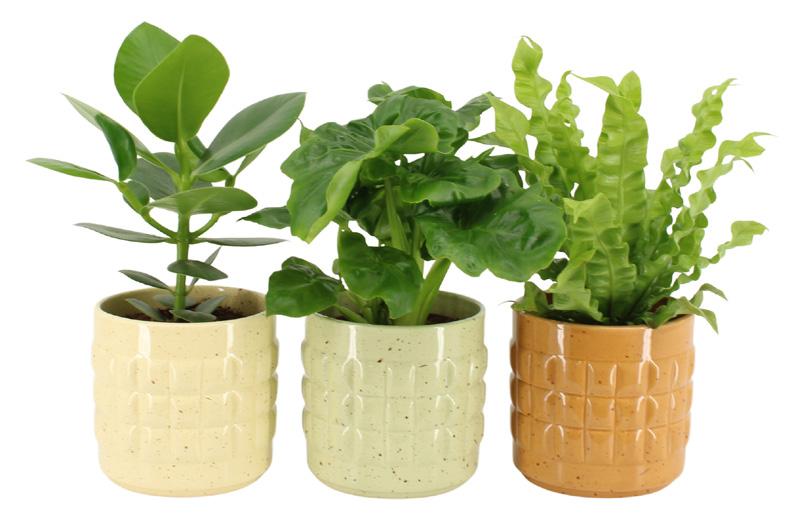
GPESMX-SP03A PASEN-§SP001A





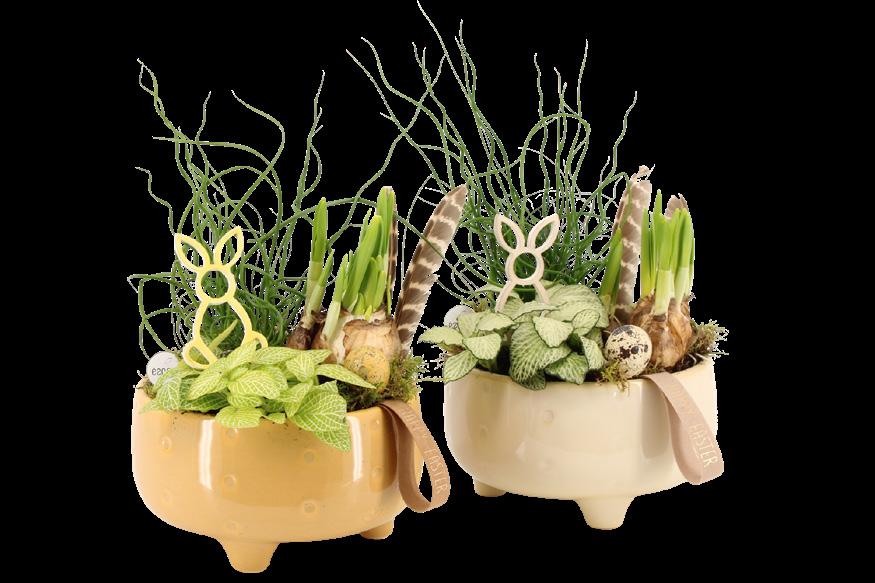


33 GPESMX-SP09A PASEN-§SP522A PASEN-§SP004A PASEN-§ZNK011A PASEN-§SP009A SPATHI-SP108A
Product in the spotlight : Richplant range


Richplant grows several varieties of exclusive houseplants such as the fragrant Gardenia Jasminoides, the exuberantly flowering Crossandra Fortuna, the mystical Aphelandra, the delicate Jatropha Podagrica and Multifida the special Coleus and Caladium. And the award-winning Geogenanthus Ciliatus Midnight Pearl.

The result of a voyage of discovery around the world. A journey that started forty years ago and that growers Richard and Ellen Scheffers are still continuing. Together with an enthusiastic team, they do their utmost every day for their customers. Top products grown with care and respect for nature.
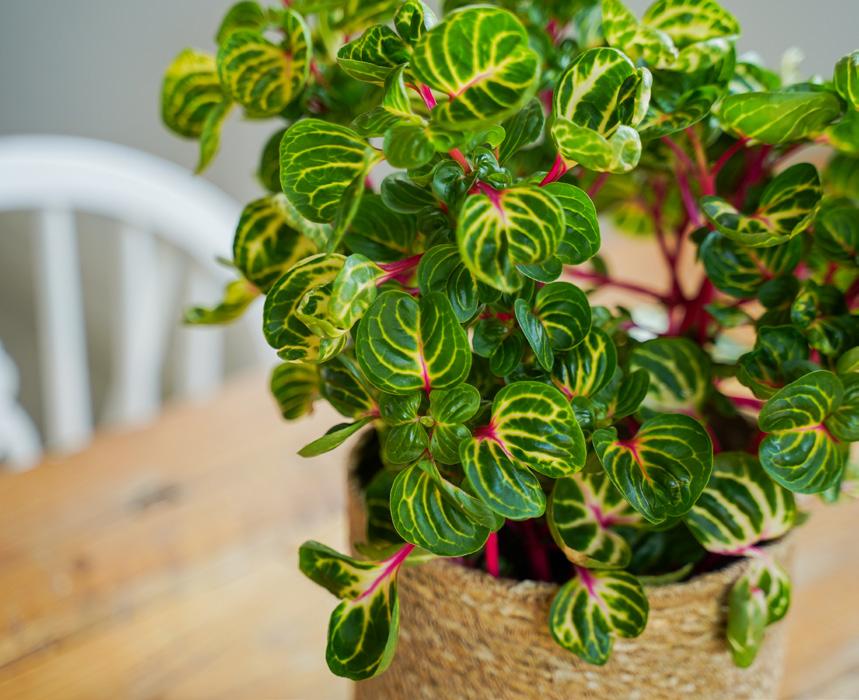
34
Irisine Herbstii Rich Funny gold
Caladium
Caladium Hilo beauty
Aphelandra Botanica
New kids on the block
Indoor Pilea
Finalist ‘Glazen Tulp Award 2022-2023’ at the Trade Fair in Aalsmeer Pilea peperoimides 6 cm with smiley print in pot cover + stick-on

From mid-February also available in pot 12 cm
Plants to taste Cherry tomato brown


35
LYESCUBR-14A
PIPEPE-SP13A
Floréac nv

Beerveldse Baan 4 - 9080 Lochristi - Belgium
T +32 9 353 53 53 - info@floreac.com - www.floreac.com


































































































